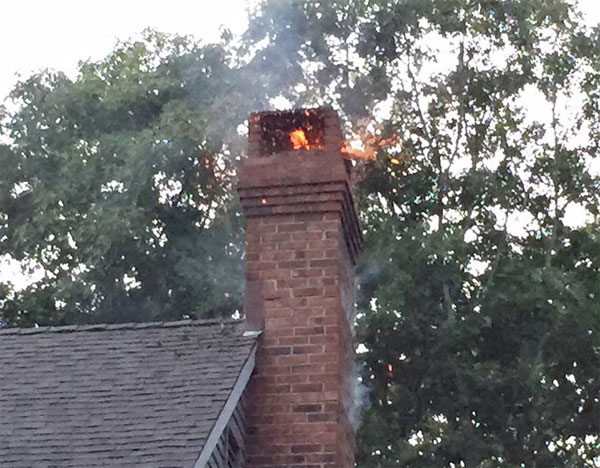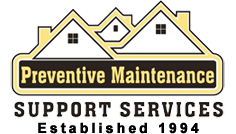
A maintained chimney is vital for the safe operation of your fireplace. Over time, chimneys can experience wear and can lead to various issues that need quick attention and repair. Recognizing the signs of chimney problems is crucial to address them before they turn into a bigger problem that will cost more money. You should have a professional inspection on your chimney at least once a year. This inspection, known as a Level 1 inspection, is a visual examination of the chimney system. It helps identify any potential issues, such as creosote buildup, chimney damage, or blockages, that may affect the performance or safety of the chimney.
It is important to have a chimney inspection after any significant changes or events that may affect the chimney’s performance. This includes remodeling or renovation work in your home, changes to the heating system, or a chimney fire. These inspections, known as Level 2 or Level 3 inspections, involve more detailed examinations and may require specialized equipment.
We will discuss common signs that indicate your chimney may be in need of repair, to ensure the safety and functionality of your home’s fireplace.
- Damaged Crown. The chimney crown, located at the top of the chimney, is important to protect the chimney structure from water damage. If you notice cracks or visible damage on the chimney crown, it is a sign that repairs are necessary. Water can penetrate through these openings, leading to further deterioration of the chimney’s masonry, including the bricks and mortar joints. For minor cracks or chips, you can use a specialized chimney crown sealant or a high-quality chimney repair caulk. Apply the sealant into the cracks and smooth it out using a putty knife. Follow the manufacturer’s instructions for proper application and curing time. If the damage is more extensive, you may need to repair or rebuild the crown using a mortar mix specifically designed for chimney crown repair. Mix the mortar according to the manufacturer’s instructions.
- Apply a layer of the mortar mix onto the damaged area, extending beyond the damaged section to create a solid repair.
- Use a trowel or masonry float to shape and smooth the mortar, ensuring it is sloped away from the flue to allow water runoff.
- If the crown requires rebuilding, you may need to use wooden forms or molds to create the desired shape while the mortar cures. Follow the manufacturer’s instructions for curing time before removing the forms.
- Deteriorating Masonry. Brick chimneys are susceptible to wear and tear due to exposure to the elements. If you observe crumbling, spalling (flaking), or loose bricks, it is an indication that the chimney’s masonry is deteriorating. These issues compromise the structural integrity of the chimney and can allow water to penetrate, leading to further damage and potential leaks.
- Damaged Flashing. Flashing is the metal material installed around the base of the chimney where it meets the roof, creating a watertight seal. Damaged flashing can cause water to went into the roof and chimney structure, leading to moisture-related issues such as leaks, water stains, or rot. If you notice loose, corroded, or missing flashing, it is crucial to have it repaired or replaced promptly. If you notice an immediate risk of water infiltration, you can use a temporary fix to prevent further damage. Use roofing cement or a similar waterproof sealant to cover any gaps or cracks in the flashing. This will provide temporary protection until you can perform a more permanent repair.
- Water Leaks or Stains around the fireplace or chimney area are clear indications of a problem. It could be due to damaged flashing, a cracked chimney crown, or deteriorated masonry. Addressing these issues promptly is essential to prevent further water damage to your chimney and surrounding areas, as well as potential structural damage to your home.
- Smoke Backing Up. If you experience smoke backing up into your home when using your fireplace, it is a sign of a chimney blockage or ventilation issue. A blocked chimney can cause dangerous levels of carbon monoxide to enter your home, posing a significant health risk. A professional chimney inspection and cleaning can identify and resolve any obstructions or ventilation problems.
- Foul Odors. Persistent foul odors emanating from your fireplace or chimney indicate a problem. It could be due to a variety of issues, such as water infiltration, chimney blockages, animal nesting, or creosote buildup. These odors can negatively affect indoor air quality and indicate the need for professional chimney inspection and cleaning.
- Damaged Chimney Flue. The chimney flue is the passage that allows smoke and gases to exit your home safely. A damaged or deteriorated flue can result in dangerous situations, such as carbon monoxide leaks or fires. Signs of a damaged flue include visible cracks, gaps, or signs of corrosion. A professional chimney inspection can assess the condition of the flue and recommend necessary repairs or replacement. For minor cracks or small holes, the technician may recommend applying a specialized chimney sealant or patching compound. If the damage is more significant, the technician may suggest repairing or replacing damaged bricks or tiles. In cases of severe flue damage, where structural integrity is compromised, a flue liner replacement may be necessary.
- Excessive Creosote. Creosote is a highly flammable substance which accumulates inside the chimney flue when you are burning wood. It is a type of oily, black liquid that is derived from the distillation of coal tar or wood. If you see large buildup of creosote, it increases the risk of chimney fires. Before you start cleaning this, wear protective goggles, gloves, and a dust mask to protect yourself from creosote particles and soot. Lay down drop cloths or plastic sheets around the fireplace to catch any debris that may fall when you are cleaning it. Ensure that the damper is closed to prevent soot from entering your home. You will need specific tools to clean the creosote from your chimney. Common tools include a chimney brush, extension rods, a vacuum with a high-efficiency particulate air (HEPA) filter, a drop cloth, and a flashlight. Use a sweeping motion to brush the interior walls of the chimney, paying particular attention to areas with heavy creosote buildup. Move the brush up and down, using steady pressure but avoiding excessive force to prevent damage to the chimney liner or masonry. Continue brushing until you have covered the entire chimney. Dispose of the collected creosote in a sealed container and discard it according to local regulations.
Recognizing the common signs that indicate it needs repair is essential for maintaining its safety and functionality. Regular chimney inspections, prompt repairs, and professional maintenance will help prevent further damage, ensure proper ventilation, and protect your home from potential hazards. Prioritizing chimney maintenance will allow you to enjoy the warmth and ambiance of your fireplace or wood-burning stove.
In addition to professional inspections, regular maintenance tasks should be performed to keep your chimney in good condition. This includes regular cleaning to remove creosote and other deposits, checking and replacing chimney caps or dampers as needed, and ensuring proper airflow and ventilation.



